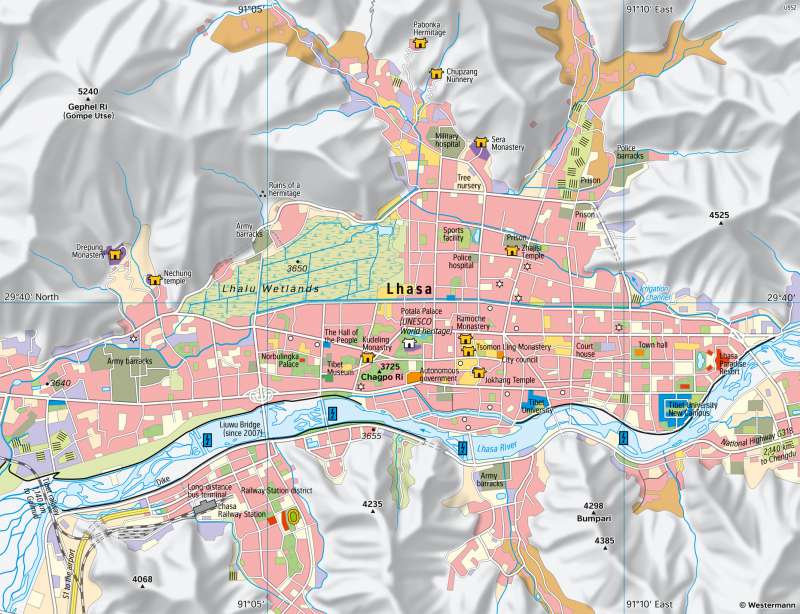Lhasa - Centre of the Tibetan Buddhism
Religious faiths
978-3-14-100890-6 | Page 41 | Ill. 4

Overview
Lhasa, as the capital of the Tibet Autonomous Region, is located at about 3600 metres above sea level in the Transhimalaya Mountains of the People's Republic of China. The 1300-year-old city is characterised by its religious significance and monasteries. The Lhasa River flows through the southern part of the city. The region is also known for many hours of sunshine and rain exclusively from June to September.
Growing Han-Chinese influence
Within the last 70 years, the number of inhabitants and thus the area of Lhasa has grown by leaps and bounds. Today, about 475,000 people live in the whole district, with the majority concentrated in Lhasa City. The population of Lhasa District is largely Tibetan. However, while only a very small proportion of Han Chinese live there overall, this population group makes up about a third of the population in the inner area, Lhasa City.
Lhasa's history, which dates back to the seventh century, is marked religiously by Buddhist temples and monasteries. The Jokhang Temple, the Ramoche Temple, and the first palace of the Tibetan King Songtsen Gampo were gradually built in the old city centre. Tibet existed side-by-side with China for a long time, but was invaded by China in 1950, leading to Tibet giving up independence. During the Cultural Revolution of 1966-1976, many monasteries in Lhasa were destroyed and occupied by Chinese officials. Some cultural artefacts were stolen. After the revolution, most of the temples and monasteries were rebuilt and restored. The Chinese influence can still be seen in the cityscape today.
Traffic corridors
The city is well connected with the rest of the People's Republic. Since 2006, the Lhasa Railway, the highest railway line, has been available, providing fast connections to Beijing and Xigaze, among others. Furthermore, the city lies on major national highways to neighbouring large cities. The Lhasa River is used to generate energy by power stations as well as to irrigate the area.
Tibetan cultural sites
Today, the Potala Palace, where the fifth Dalai Lama once lived, is located on the site of the royal palace. This and three pilgrimage routes contribute to the tourist interest in this region. In 1999, the Tibet Museum was opened to introduce tourists to Tibetan culture. Hotels also show the tourist influence. The Tibet University on the Lhasa River has been providing opportunities for school education since 1985.




